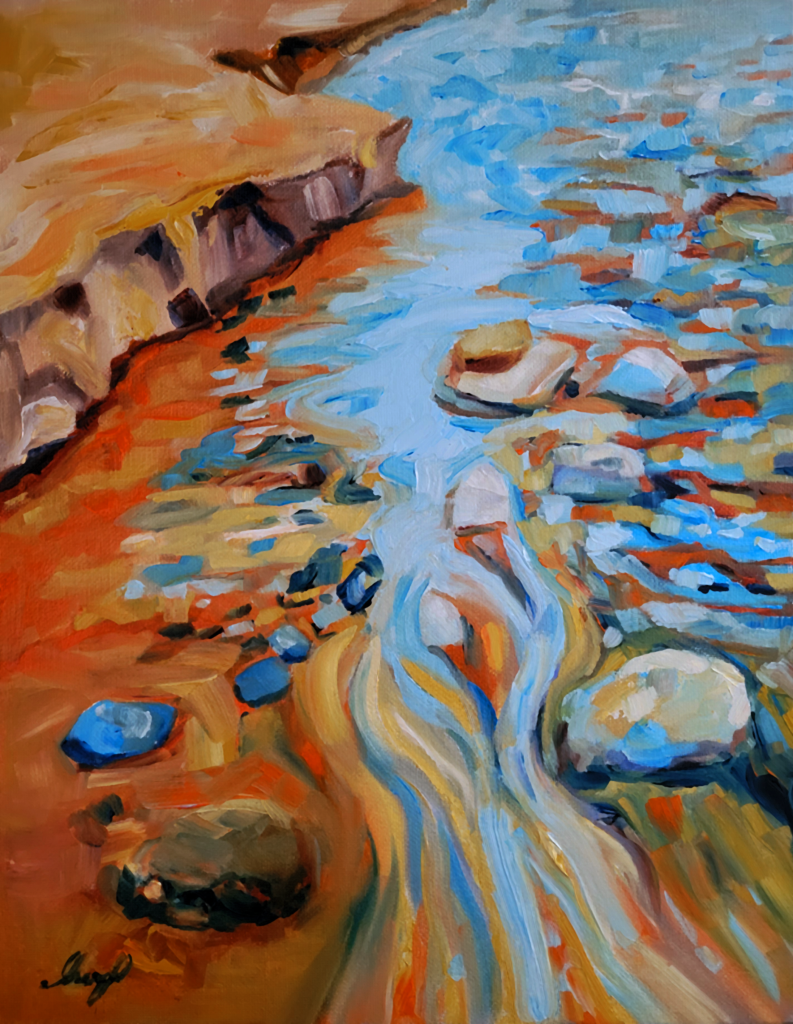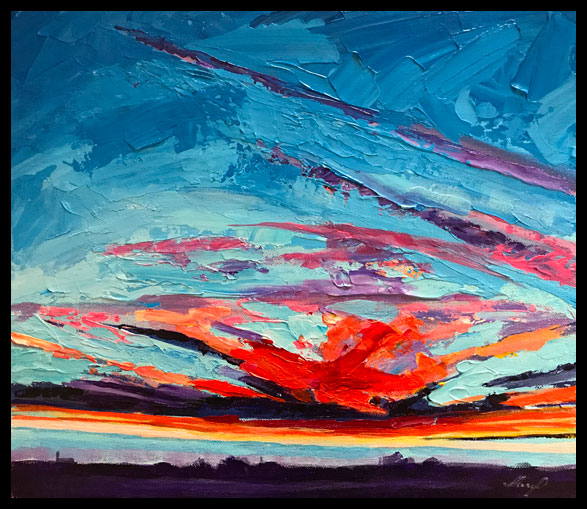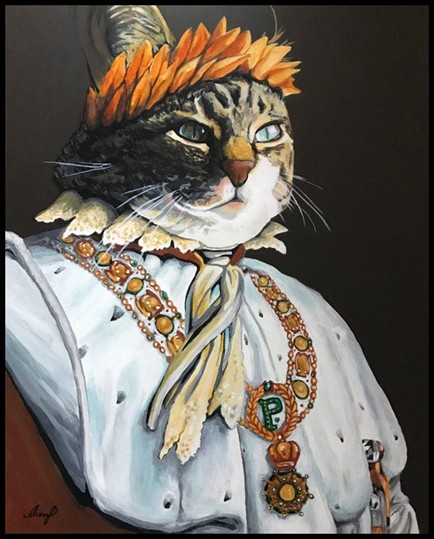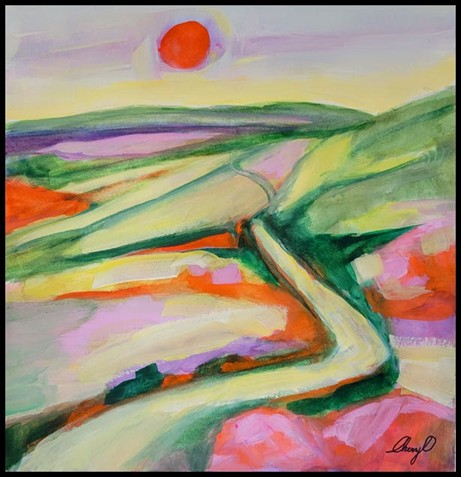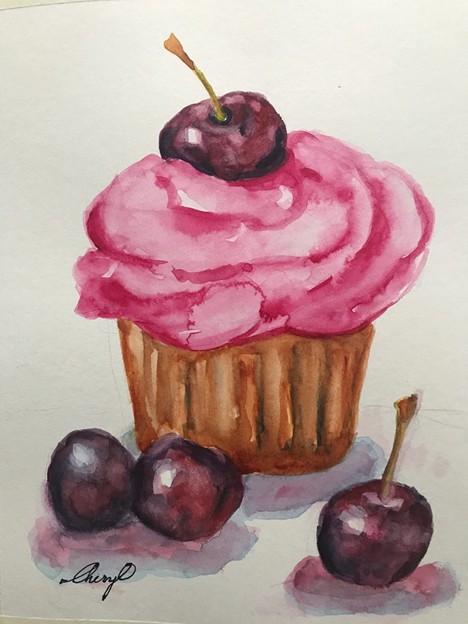Welcome to my mind
Watercolour painting by Cheryl O Art
It was one of those times when too many thoughts came bounding at me.
These thoughts did not know each other, or at least, I did not think they were related. Despite this, they were eager to energetically congregate there in my gray matter.
I felt rather lost, wishing that between my ears I might find a wee map with a small red dot and the words, ‘You are here.’
There was no map.
I began to move the thoughts around like jigsaw puzzle pieces hoping for a match-up somewhere.
The disjointed and unrelated thoughts were quite clear. There was ‘being’, ‘beauty’, ‘love’, and I am quite sure there was also a giggle in there.
Not like the 3 a.m. thought fests consisting of slimy somewhat scary thoughts that are remarkably vague and confused. You may know them, those half-formed shapes in the dark corner. Let’s leave these at the bottom of a swampy area in the gray matter, never to see the light of day. I digress.
Someone said – oh golly, I googled but can’t find the quote – ‘someone’ will have to do. Someone said, ‘When things do what they are meant to do, they are beautiful.’ It was likely more eloquent in the original, but these were the words I was able to grab out of the wild whirlwind of thoughts.
The beauty of things in just being. I thought of snowflakes giving wet kisses to my cheeks, and watercolour paint bursting into the pre-wet area of a watercolour paper. I thought of the powerful flight of the red-tailed hawk that lives nearby. Yes, these are beautiful in simply being, in simply doing what they were meant to do.
I decided to swing a lasso and see if I could catch some more thoughts.
You should be informed that I failed at skipping rope in Grade 3. The idea of me lassoing something is quite ludicrous. But inside the territory known as the brain, those practical inhibitors hold no weight at all.
So, there I am. Bravely swinging my lasso at the whirling thoughts, when there is a tap on my shoulder. A smiling voice says ‘Silly, you can’t catch the next thought with a lasso because the next thought is myself, and I am the wind through which all things live and move and have their being.’
I stop swinging the lasso – and then I see it.
Shimmering like a fleet of fireflies in formation, oh, I do so like alliteration – shimmering in the air is a word, and the word is ‘love’. Hmmm. Let’s see how that one might connect.
If things doing what they are meant to do are beautiful, then they are easy to love. Nope. It’s a miss – close but no cookie.
How about this instead? Things doing what they are meant to do are beautiful because they were created in love. Yes! There is a good fit.
Now you may wish to argue that there is no logic at all in this. Just because things are beautiful doesn’t logically infer being created in love. To which I will respond, have you seen a butterfly wing? Have you
